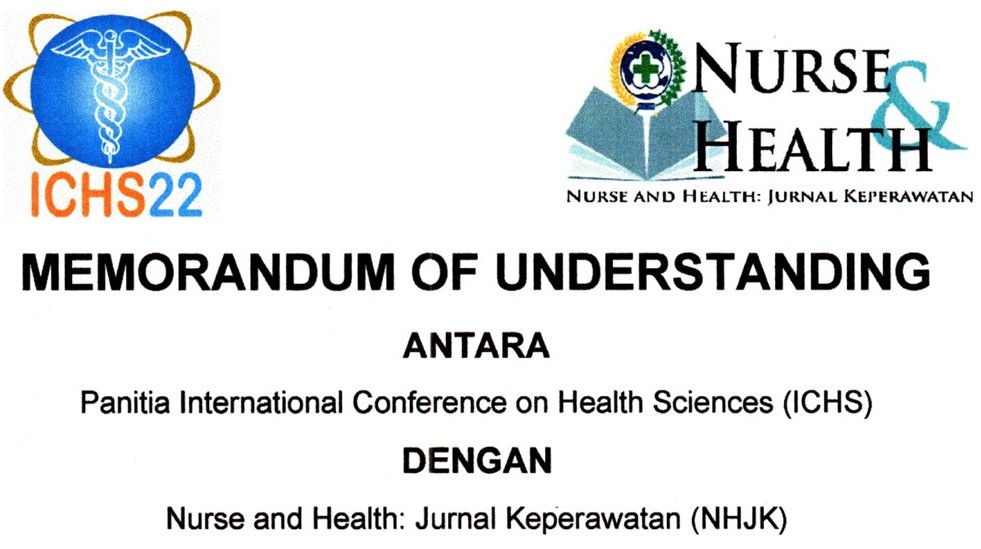COMMITMENT MOTHER AND BEHAVIORAL PREVENTION OF PICKY EATING ON TODDLER
Abstract
Background: Picky eating is a picky behavior that can be interpreted as a rejection of certain types of food or fear of trying new foods. Picky eating can make some problems inadequacy of nutrition and impact on child growth if it's not properly handled and left prolongObjectives: The purpose of this study was determined to describe the relationship between commitment mothers and behavioral prevention of picky eating on toddler.Methods: The research used correlational analytic study with cross-sectional design. The Independent variable in this study is mother’s commitment and the dependent variable is behavioral prevention of picky eating. The population was mothers with toddler age children in the working area at the Public Health Center of Kedawung 1, Sragen, Central Java. A sample of 120 mothers were selected by purposive sampling. Data were collected using questionnaires demographic of the respondent, mother’s commitment, and behavioral prevention of picky eating that compiled by the researcher. This questionnaire has been tested for validity and reliability, and then analyzed used Spearman-rank test.Results: The results of this study showed that the mother's commitment to picky eating prevention behavior had a significant relationship (p <0.05) and have a coefficient correlation with positive value (r=0.535).Conclusion: The good mother’s commitment can make a good behavioral prevention of picky eating in toddlers. There needs to be more research on the factors that influence the behavioral prevention of picky eating. Keywords: Commitment, Mother, Picky EatingDownloads
References
Alligood, M. R. (2014). Nursing Theorists and Their Work (8th ed.). North Carolina: Elsevier.
Chao, H.-C. (2018). Association of Picky Eating with Growth, Nutritional Status, Development, Physical Activity, and Health in Preschool Children. Frontiers in Pediatrics, 6(February), 1–9. https://doi.org/10.3389/fped.2018.00022
Edelson, L. R., Mokdad, C., & Martin, N. (2016). Prompts to eat novel and familiar fruits and vegetables in families with 1-3 year-old children: Relationships with food acceptance and intake. Appetite, 99, 138–148. https://doi.org/10.1016/j.appet.2016.01.015
Fauziah, I. N., Djuari, L., & Arief, Y. S. (2015). Pengembangan Model Perilaku Ibu dalam Pencegahan Gizi Buruk Balita. Jurnal Ners, 10(2), 195–207.
Harris, H. A., Staton, S., Morawska, A., Gallegos, D., Oakes, C., & Thorpe, K. (2019). A comparison of maternal feeding responses to child fussy eating in low-income food secure and food insecure households. Appetite. https://doi.org/10.1016/j.appet.2019.03.005
Kementerian Kesehatan RI. (2016). Buku panduan GERMAS (Gerakan masyarakan hidup sehat). Kementrian Kesehatan Republik Indonesia.
Kementerian Kesehatan RI. (2018). HASIL UTAMA RISKESDAS.
Levene, I. R., & Williams, A. (2017). Fifteen-minute consultation in the healthy child : “ My child is a fussy eater !” Arch Dis Child Educ Pract Ed 2013, 1–7. https://doi.org/10.1136/archdischild-2016-311787
Mandasari, D. P. F., Sustini, F., & Krisnana, I. (2017). Pelaksanaan Diabeters Self Management Education Berbasis Health Promotion Model terhadap Perilaku Kepatuhan Klien Diabetes Melitus (DM) Tipe 2. Jurnal Penelitian Kesehatan Suara Forikes, VIII(4), 198–208.
Pender, N. J. (2011). Heath Promotion Model Manual. Chicago: http://nursing.umich.edu/faculty-staff/nola-j-pender.
Pender, N. J., Murdaugh, C. L., & Parsons, M. A. (2015). Health Promotion in Nursing Practice (7th ed.). New Jersey: Pearson Education, Inc.
Rusilanti, Dahlia, M., & Yulianti, Y. (2015). Gizi dan Kesehatan Anak Prasekolah. (P. Latifah, Ed.). Bandung: PT Remaja Rosdakarya.
Scaglioni, S., De Cosmi, V., Ciappolino, V., Parazzini, F., Brambilla, P., & Agostoni, C. (2018). Factors Influencing Children’s Eating Behaviours. Nutrients, 10(6), 1–17. https://doi.org/10.3390/nu10060706
Taylor, C. M., Steer, C. D., Hays, N. P., & Emmett, P. M. (2018). Growth and body composition in children who are picky eaters: a longitudinal view. European Journal of Clinical Nutrition, 1–10. https://doi.org/10.1038/s41430-018-0250-7
van der Horst, K., Li, Z., Ma, D., Wang, P., Vinyes-Pares, G., Wang, J., … Edelson-Fries, L. R. (2016). Perceptions of food intake and weight status among parents of picky eating infants and toddlers in China: A cross-sectional study. Appetite, 108, 456–463. https://doi.org/10.1016/j.appet.2016.11.009
Xue, Y., Zhao, A., Cai, L., Yang, B., Szeto, I. M. Y., & Ma, D. (2015). Growth and Development in Chinese Pre- Schoolers with Picky Eating Behaviour : A Cross-Sectional Study. Plos One, 1–16. https://doi.org/10.1371/journal.pone.0123664
Authors who publish with Nurse and Health: Jurnal Keperawatan agree to the following terms:
- Authors retain copyright licensed under a Creative Commons Attribution-NonCommercial 4.0 (CC BY-NC 4.0), which allows others to remix, tweak, and build upon the authors' work non-commercially, and although the others' new works must also acknowledge the authors and be non-commercial, they don't have to license their derivative works on the same terms.
- Authors are permitted and encouraged to post their work online (e.g., in institutional repositories or on their website) prior to and during the submission process, as it can lead to productive exchanges, as well as earlier and greater citation of published work (See The Effect of Open Access). Authors can archive pre-print and post-print or publisher's version/PDF.























